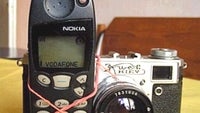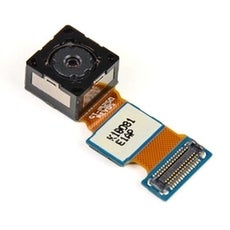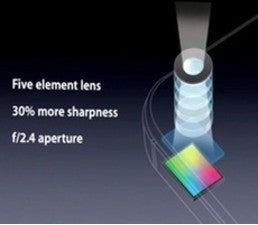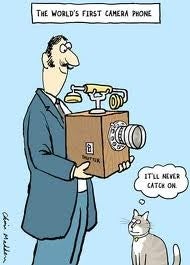What makes camera phone pictures look good, and what doesn't

When was that last time you used your point-and-shoot camera? If you are among those people who can't remember, that is probably because you now snap photos with that phone of yours instead. And we cannot blame you. After all, carrying around a dedicated camera at all times is anything but convenient, whereas everyone has a phone of some kind resting in their pocket.
However, while select camera phones are capable of producing images of quality close to that of basic dedicated digital cameras, same thing cannot be said about the rest. That is because not all camera phones are created equal, and the results tend to vary from one device to another.
But which are the factors that the quality of your photos depends on, and which don't really matter that much? Well, read along to find out.
Megapixels
Manufacturers have done an excellent job at convincing the general public that the more megapixels a camera has, the better the photos will look. However, what the number indicates is simply how big of a print you can make without sacrificing quality. For example, a 2-megapixel photo is sufficient for making a high-quality 6" by 4" print at 300ppi. Modern high-end smartphones come with cameras of 8 megapixels and above, which is a resolution high enough for making a great 8" by 11" print at the same 300ppi.
But if you are still not convinced, allow us to demonstrate that megapixels are not what the quality of an image depends on. Below you see an image taken with a Canon EOS 60D DSLR camera at 2.5 megapixels and then scaled up to 8 megapixels for comparison's sake. Next to it we have the same scene captured with an iPhone 4S at 8 megapixels. Both cameras shoot under the same lighting conditions and have their settings adjusted as identically as possible: f2.4, ISO125, 1/20 shutter speed for the iPhone 4S and f2.5, ISO125, 1/15 shutter speed for the DSLR. Providing light in our studio are two tungsten bulbs at 3200K.
As you see, the image from the camera looks superior despite its much lower megapixel count. Or in other words, megapixels do not really matter if the camera as a whole is of mediocre quality. That is why no phone or a pocket point-and-shoot camera can capture an image that looks flawless when viewed in its actual size. For that to be possible, it is of utmost importance for the camera to have a high-quality...

Camera module from a Samsung Galaxy Nexus housing an image sensor, optical system, and the necessary circuitry
Image sensor
This is the element that is truly crucial to the overall quality of a camera. The sensor is responsible for converting light into electrical signals that the device's hardware can process and compose digital photos out of.
Recently, we have been hearing lots about supposedly advanced sensors – ones that have backside illumination (BSI for short), or ones that are physically bigger. And theoretically, such features are great to have, yet it has to be considered that image sensors are not all the same. Therefore, neither their size nor type can speak of a camera's quality on their own. We know that a sensor that is physically bigger will be superior to a smaller one, but that is valid only in an ideal case scenario. And even if we compare two phones with sensors of the same size, there will still be a difference in the quality of their images. That is because their sensors will be of different quality, not to mention the bunch of other factors that come into play.
To sum it all up, don't judge a camera by its megapixels or by the specs of its sensor. You should care only about the quality and detail of the actual images that it takes.

5 lenses compose the optics on the iPhone 4S' camera
Some manufacturers promote devices with branded optics. However, the association with a popular brand name can be misleading as it is not a guarantee that the camera's images will be good. What really matters is the actual quality of the lenses. The optical system, which they together compose, is what guides the light towards the sensor. The better the optics, the fewer optical imperfections will be present on the final image. Unfortunately, such details are rarely, if ever, provided by the manufacturers.
Aperture
Aperture used to be a term that you would hear only when professional photography is concerned, yet it can now be seen on the specs sheets of some camera phones as well. What the f-number represents is the width of the opening, through which light travels towards the sensor. The lower the number, the wider the aperture is, thus letting more light to get through. That should provide better low-light performance while keeping the exposure time short and ISO speed low.
But do you know how aperture really affects an image? Below you see the same scene as above taken with the same Canon DSLR camera at f2.0 aperture, and then taken again at f4.0 aperture. The iPhone 4S photo at f2.4 aperture is also there for reference. As it becomes obvious, the narrow aperture does not result in an inferior photo. In fact, it widens the depth of field and reduces distortion around the image's edges.
Of course, the DSLR camera compensates for the more narrow aperture by increasing the ISO, yet the quality of its photos is still high. And that is what we want to explain – a camera's performance depends on all its elements, not only on the ones that the manufacturer touts. That is why we will stress it once more that you should not care about a single camera specification, but your eyes need to do all the judging on the final photo.
Dual LED vs Xenon flash
When shooting at night or in dark environments, having the proper illumination is essential for taking the best shot possible. That is why every self-respecting camera phone has a flash of some sort, and the LED kind can be found on 99% of all handsets. However, a Xenon flash provides superior brightness, thus illuminating the scene better and allowing for the exposure time to be kept shorter. Unfortunately, Xenon flashes are more expensive to produce and are known to be quite power hungry, which is why we don't see them quite often on camera phones nowadays.
Camera settings
Taking the perfect shot also depends on having your camera phone settings adjusted accordingly. That includes focus, color balance, exposure, and ISO speed. Luckily, camera phones are smart enough to determine the right settings on their own, so users should not worry about these too much. However, in some cases it is good to tweak these yourself, should the camera's interface allow you to. For example, some camera phones have a “sports mode”, which basically keeps exposure times short in order to reduce motion blur. Unfortunately, the ISO speed goes up, meaning that the amount of digital noise does so too. If you want to make an impressive night shot, see if there is a “night mode” available. That increases the exposure time so that more light can be captured by the sensor. However, in that case, keeping the camera as still as possible is of critical importance. If one wants to make the most out of their camera phone, it is advisable that they experiment with all the settings and modes that the interface has in stock.

Was this the world's first camera phone?
Last but not least, we cannot neglect the hardware and software that take care of all the dirty work, namely processing the image information from the sensor and turning it into a digital photo. That is where the device's image processor and processing algorithms come to play. Their performance affects not only the image's quality, but also the entire camera experience that the phone delivers. For example, a number of modern camera phones have virtually no shutter lag because of the capable hardware that controls the camera. Furthermore, it is what determines how long the delay between each frame will be.
Final words
In conclusion, a camera phone's performance depends on a whole bunch of factors, and none of them should be used individually to estimate a device's quality. Do not be fooled by marketing tricks, such as optics carrying a given brand name, or the fancy titles that some companies use to market their sensors with. It is you and only you that can tell how good a camera phone is, and to find that out, just take it for a spin and have a good look at the photos that it takes.













Things that are NOT allowed: